Step by Step on The Way of Saint James
From Gonzar to Melide
9 June 2018
Stage 30 – 31 km
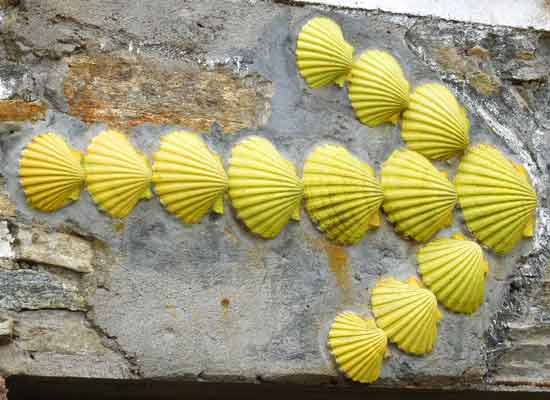
I am three days away from Santiago de Compostela, and the excitement for the approaching final destination keeps growing stronger.
Exactly one month ago, I set off from home, carrying not only the weight of my backpack but also a question that felt heavier than anything else.
– Will I ever manage to walk nearly nine hundred kilometres, every day for over a month? –
That was the doubt that plagued me every time I thought about completing The Way of Saint James. Today, having reached this point, I think I can already give a positive answer.
The journey is almost complete, but even though the end is near, I cannot afford to relax: the last stages ahead of me will not exactly be a walk in the park.
Today’s stage is already quite demanding: I will have to cover almost thirty-two kilometres, and the initial stretch is all uphill.
It is still too early to “claim victory,” as unexpected events can arise when least expected.
During this last part of The Way, I happened to meet several times a fit young man who I always saw advancing briskly, covering kilometre after kilometre with ease.
A few days ago, however, I saw him limping with a large bandage around his ankle. He told me that during a rocky descent, he twisted it badly, effectively putting an end to his journey.
Taking into account the experience of the young pilgrim I just mentioned, I resolve to proceed with the utmost care along this final stretch of the route. I do not want to waste all the effort and hardships endured to get here.
To further safeguard myself, I decide not to carry my backpack, opting instead to send it ahead to the destination via courier. This way, I can walk more lightly and focus on my steps. I will do this both today and tomorrow.
It is 6:30 as I leave the municipal hostel in Gonzar.
I am joined by Rocco, Giovanna, and Amandine.
The fog envelops the landscape this morning too, but the weather soon improves, and at last, we see the sun again after several days of grey skies.
The initial stretch consists of an uphill climb lasting almost five kilometres.
It is just before eight when we arrive at Ventas de Narón. Once here, we can consider the ascent finished.
From this point onwards, The Way gradually descends toward Melide, although there will still be some short uphill and downhill sections to cover.
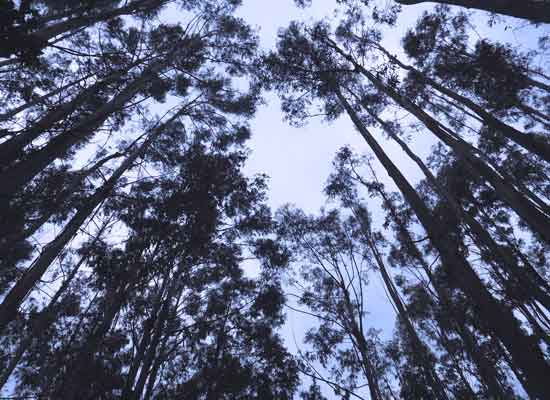
Galicia’s nature continues to amaze us, revealing more of its peculiarities.
Suddenly, the air begins to carry a pleasant fragrance, signalling that we are crossing a eucalyptus forest.
This tree is quite widespread in the region, although it is not native.
It is a tropical plant brought here in the 19th century by Galician missionaries returning from Australia.
Thanks to Galicia’s humid and rainy climate, the eucalyptus adapted well, as it requires abundant water, which it consumes in large quantities.
Its rapid growth has also favoured its extensive spread across the area within just a few decades.
After passing through the eucalyptus forest, the woods return to their typical composition of chestnuts, pines, and oaks.
The dirt track winds constantly through natural surroundings; the sounds of modern civilisation are distant, and the predominant noises are the continuous croaking of frogs and toads inhabiting the wet undergrowth.
Tiny country churches surrounded by equally small cemeteries; barns where cows are still milked by hand; ancient stone crosses marking The Way; and simple “hórreos” (granaries) – these are the sights that unfold before our eyes as we walk.
Just before reaching the village of Leboreiro, I am intrigued by an elderly pilgrim walking The Way with her medium-sized mongrel dog on a leash.
The woman walks at a slow pace, appearing as though she is on a leisurely stroll, despite carrying a fairly large backpack. Its size and bright orange colour clash strikingly with the fuchsia jacket she is wearing.
I walk alongside her, greet her with the usual – Buen camino! – and continue by asking the usual question about her origins: – Where are you from? –
She tells me she is Dutch, from a village near Amsterdam, and explains that she started The Way several months ago, departing from Paris.
She is travelling in a camper with her husband, who drives her to the starting point of each stage every morning and then moves to the agreed destination.
She does not specify how many kilometres she has walked and how many she has travelled by camper, but I am still fascinated by her experience. I consider her way of doing The Way of Saint James one of the most unique I have encountered so far.
Another thing I am curious about, though I refrain from asking to avoid seeming too intrusive, is why she carries such a large and, I imagine, heavy load on her back. I would think she could leave everything in the camper and bring only the bare essentials with her.
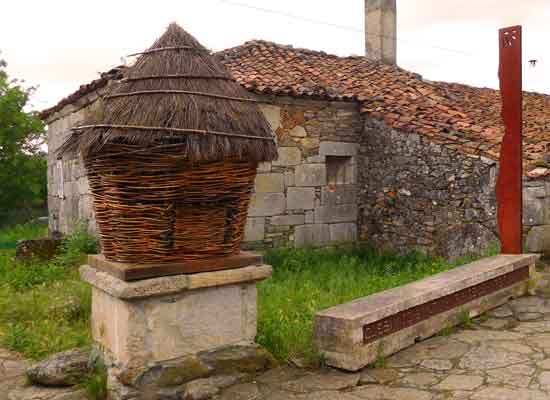
Passing through Leboreiro, I glance at the small Igrexa de Santa María, a Gothic-style church with some Romanesque influences.
In front of it, set on a stone base, is a “cabazo” – a large circular basket made of woven wood and topped with a conical straw roof.
Like the “hórreos,” it is used to store grain, keeping it dry thanks to natural ventilation.
After spending the whole morning without a single drop of rain, it starts drizzling shortly after 14:00.
With just three kilometres remaining to complete today’s stage, this final stretch offers a mix of enchanting forests and small rural villages.
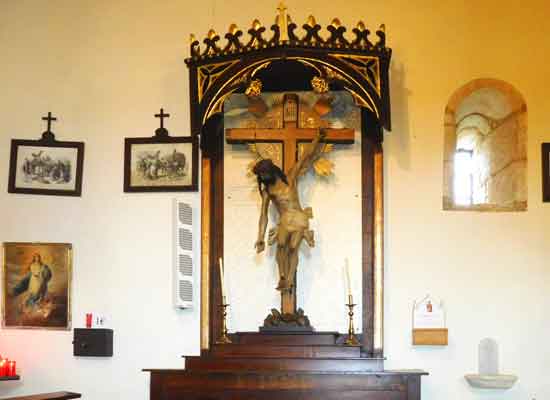
Furelos is the last town I pass before reaching Melide.
I cross the medieval stone bridge over the river that shares its name with the village, composed of four arches of varying sizes.
Just beyond the bridge, I come across the Igrexa de San Xoán de Furelos.
Although the church is of Romanesque origin, its exterior is not particularly striking. Nonetheless, I take a few minutes to step inside and have a look.
The interior is quite simple, but what stands out most is a peculiar wooden crucifix, where Christ is depicted with His right arm hanging down.
This unusual representation of Our Lord is linked to a legend about a young man unable to resist repeating the same sin.
After yet another confession, the priest denies him absolution, considering him a hopeless sinner. At that moment, Christ Himself is said to have pulled His nailed hand from the cross to bless the man and grant him forgiveness.
The current sculpture, created by a local artist, dates back to 1950 and was inspired by the original, which has been lost.
It is 14:45 when I finally arrive in Melide.
After walking along the rúa Viejo Camino, I reach the junction with avenida de Lugo, a wide main road in the town centre. Right on this corner is one of Melide’s most famous restaurants, the pulpería A Garnacha.
Through a kitchen window facing the street, I spot a man chopping freshly cooked octopus. Seeing me pass by, he leans out and offers me a quick sample.
– Sampling is excellent marketing! – If the product is truly good, there is no better way to win over a potential customer.
Given the time, my hunger, and the delicious bite I just tried, the temptation to stop and eat is strong. However, I resist and press on to the hostel, eager to reunite with my friends, from whom I have had no news for some time.
I promise myself, though, to return to the restaurant later for dinner.
“El pulpo á feira” is a traditional Galician recipe that was once prepared mainly on festive occasions.
The ingredients are very simple: octopus, water, extra virgin olive oil, sweet paprika, and coarse salt.
Here in Melide, despite being quite far from the sea, octopus is a particularly tasty dish, and the many “pulperías” in town are among the most renowned in all of Galicia.
– You cannot leave Melide without having tried “pulpo alla gallega” at least once! –

I arrive at the Albergue de peregrinos de la Xunta de Galicia in Melide right at 15:00.
There, I find my friends, who arrived not long before me.
It often happens that we lose sight of each other along the way. My desire to travel “slowly” frequently leads me to pause for photos or simply to enjoy the scenery.
A heavy rain shower keeps us at the hostel for the first few hours of the afternoon, giving us a chance to rest a bit.
It is almost 18:00 when the rain finally stops. We decide to head out for a stroll around the town and then go straight to dinner.
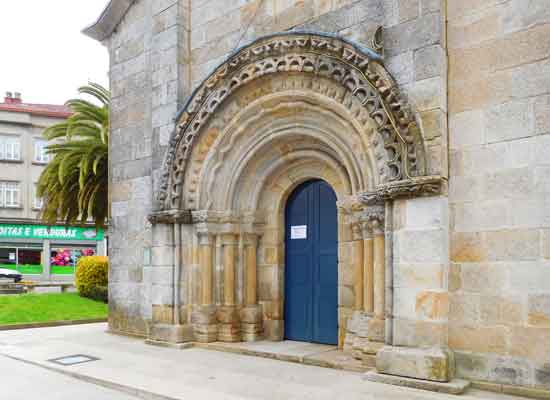
Compared to the many small villages we have passed through, Melide is a larger town with over seven thousand inhabitants.
Even here, the main historical points of interest are several churches.
The Capilla de San Roque, located along avenida de Lugo, was built in 1949 using materials from two demolished churches.
The Romanesque entrance portal is particularly beautiful, featuring four archivolts with smooth and wavy decorations and columns with capitals on either side.
It is said that this portal is the one depicted on the ten Euro banknote.
Next to the church stands a 14th-century “cruciero,” considered the oldest in Galicia.
Another notable monument is the Iglesia de San Pedro, part of the former Franciscan convent of Sancti Spiritus, whose first historical records date back to 1325.
This last church is located in the Praza do Convento, the square regarded as the endpoint of the Camino Primitivo – another Jacobean route starting from Oviedo in Asturias.
Pilgrims walking this “Way” continue from Melide along the French Way to reach Santiago de Compostela.
The Camino Primitivo spans 290 kilometres and is so named because it was one of the earliest routes followed by pilgrims after the discovery of the tomb of the Apostle James.
This path, running through northern Spain, is less travelled and ideal for those seeking a more solitary experience.
Its terrain, ranging from hilly to mountainous, involves constant ascents and descents that demand considerable effort.
Compared to the French Way, accommodations along the route are less common; however, with the development of dedicated walking paths through forests and away from paved roads, more facilities are gradually emerging.
To conclude this thirtieth day of walking, we have no doubts – we head to dinner at the pulpería A Garnacha.
Along with Rocco and Giovanna, Francisco, an elderly man from Barcelona, also joins us.
Francisco has a slight build, but contrary to appearances, he possesses great inner strength – evident from the fact that this is not his first time walking The Way of Saint James.
He is also a big fan of octopus prepared in the Galician style, so much so that tonight’s serving is his second helping of the day; he already had a portion at lunch upon arriving in Melide.
We accompany the “pulpo alla gallega” with a dish of “pimientos de Padrón.”
These peppers are another Galician specialty – medium-sized, non-spicy green peppers originally cultivated in the Padrón area. Franciscan monks brought their seeds from South America.
We pair these two excellent dishes with Galician wine, which, by tradition, is served in cups similar to those used for milk at breakfast.
We finish our meal with a slice of Tarta de Santiago.
Here, there is no “pilgrim menu,” and we pay à la carte.
The octopus is offered in three different portion sizes; the small one costs 9.50 Euros and is more than enough for one person.
In the end, the bill comes to 18 Euros per person – a bit higher than what we usually pay.
However, considering how much we enjoyed the meal, spending a little extra for once seems well worth it.
| © Aldo Lardizzone 2020 |  |
CREATIVE COMMONS |



